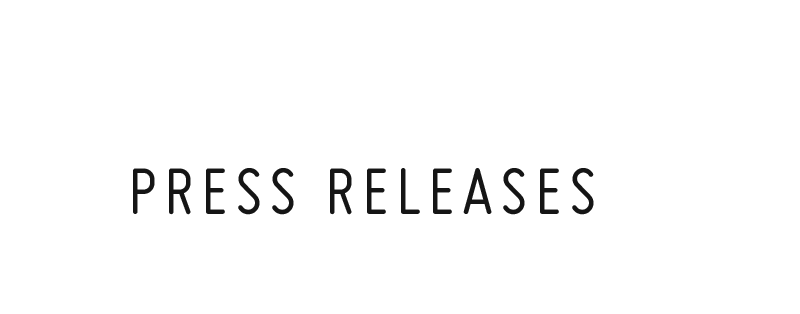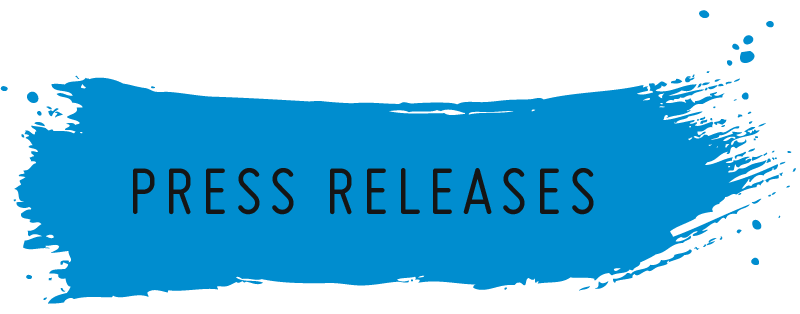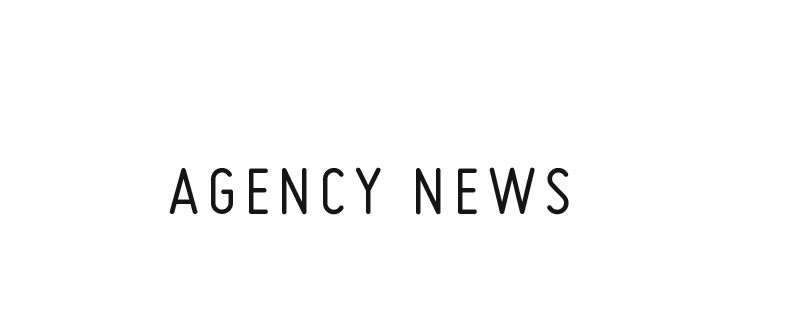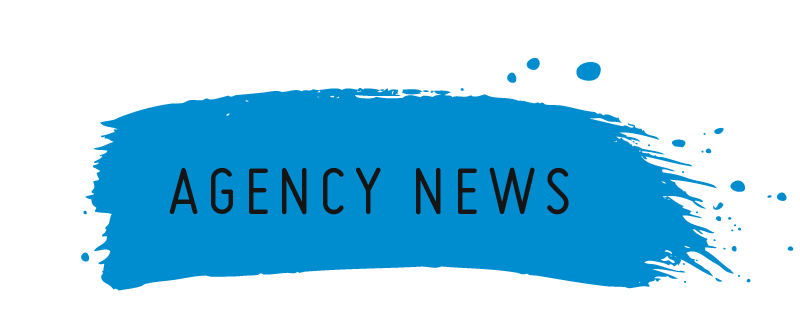- 3D Print Bureau
- 6K
- Agmatix
- Airwayz
- AKA Foods
- AM-Flow
- Appadda
- Caracol
- Carbon
- CG Trader
- Conflux
- CyberOptics
- e-Xstream
- Flamerite
- GenCell
- GreenEye
- Impossible Objects
- Incus Media
- Ineco
- InkBit
- ITG
- JPB Systeme
- KeyProd
- Landa
- LEO Lane
- Lumet
- Magic Software
- MakerBot
- Marketiger
- Nano Dimension
- Paragon Rapid Technologies
- PearlX
- Plant & Bean
- Redefine Meat
- Replique
- Ripples
- Sakuu Corporation
- Segen
- SolarEdge
- StoreDot
- Sunrock
- The Bespoke Group
- Trigo
- UltiMaker
- Xjet
Innovative Use of Satellite Dishes for Solar Power Generation
- Swiss telecom service provider converts unused satellite dishes into ‘solar dishes’, powering the data centre’s rising energy needs, together with hydropower
- DC-optimized solar inverter solution key to overcoming the complex challenge of installing solar panels on satellite dishes
- See video for more details on the installation
Munich, Germany – 16 April 2025 – CKW, a leading Swiss provider of integrated energy and building technology solutions, has successfully transformed unused satellite dishes located on the premises of Leuk TDC, a Swiss telecom service provider, into cutting-edge solar installations. This innovative project, developed in collaboration with global smart energy technology company, SolarEdge, exemplifies a bold approach to renewable energy by highlighting the significant potential of re-using existing infrastructure for solar.
Located in the town of Leuk, Switzerland, Leuk TDC initiated the idea of utilizing old satellite dishes on their premises – originally constructed in 1972 – as the foundation for a new solar plant designed to offset the energy requirements of its power-hungry data centre. Recently installed, the solar plant comprises two satellite dishes with 307 solar panels on each one, with each dish generating approximately 110,000 kWh of clean energy annually. The company has also installed a rooftop solar system on the main building of its computing and data centre, generating a further 555,000 kWh of solar power annually. In addition to solar, the data centre is powered with energy from hydroelectric power plants, meaning the data centre’s entire energy needs are covered with 100% renewable energy.
Given the complex orientation and inclination of the solar panels on the satellite dishes, shadows and varied inclinations threatened to reduce the efficiency of the solar system. With traditional string solar inverters, they reduce the overall performance of the solar array to match the weakest performing panel on the string, meaning one shaded panel could reduce energy yield considerably. As a result, SolarEdge’s innovative DC-optimized inverter solution was used with Power Optimizers attached to the underside of every pair of solar panels. This enables the solar system to mitigate the impact of module mismatch on the satellite dishes, maximizing energy production for Leuk TDC and ensuring the project was financially viable.
Manuel Jossi, Deputy Head of Solar Technology for Central Switzerland at CKW, the installer of the solar plant, comments: “Having design flexibility with a solar installation is a huge benefit for installers. In complex cases such as these with uneven surfaces, without the use of power optimizers we simply would not have been able to achieve anywhere close to the level of energy being produced today. I recommend that others planning similar solar installations allocate sufficient time for planning and collaborate with trusted personnel to overcome any technical challenges.”
The move to solar underpins Leuk TDC’s commitment to sustainability having already been using hydropower to power the core of its operations for several years. With Leuk TDC’s data centre requiring more and more power year on year, the company plans to continue leveraging solar energy and hydropower to power 100% of its data centre’s energy needs moving forward. This not only supports Leuk TDC’s environmental goals, but also offers the company more financial stability by reducing its dependency on changeable grid electricity costs. The company hopes the success of the satellite dish project serves as an inspiring model for future infrastructure innovations in renewable energy.
John Harris, CEO at Leuk TDC, concludes: “The need for the satellite dishes were becoming obsolete, so we always knew we wanted to make use of them in some way or another. The design of the dishes, which allows them to be aligned both horizontally and vertically, proved ideal for a solar panel installation. By following the sun’s path throughout the day, these dishes optimize solar radiation absorption. Having installed them we get considerably more hours of electricity than conventional string system, and Power Optimizers enhance electricity production further.”
-
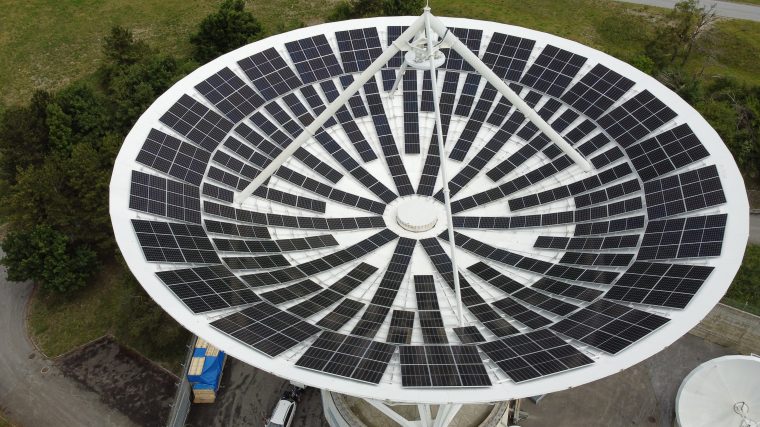 The unused satellite dishes are used to power Leuk TDC’s data centre, combined with hydroelectricity and a rooftop solar system, enabling the data centre to be 100% powered with renewable energy.
The unused satellite dishes are used to power Leuk TDC’s data centre, combined with hydroelectricity and a rooftop solar system, enabling the data centre to be 100% powered with renewable energy.
Click here to download 300dpi images -
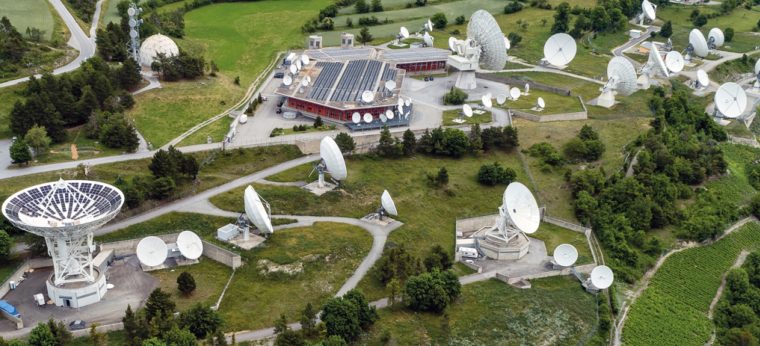 Each satellite dish, equipped with 307 solar panels and optimized by SolarEdge Power Optimizers, generates approximately 110,000 kWh of clean energy annually
Each satellite dish, equipped with 307 solar panels and optimized by SolarEdge Power Optimizers, generates approximately 110,000 kWh of clean energy annually
Click here to download 300dpi images
Innovative Nutzung von Satellitenschüsseln zur Solarstromerzeugung
- Ein Schweizer Telekommunikationsdienstleister wandelt ungenutzte Satellitenschüsseln in „Solarschüsseln” um. Diese decken zusammen mit Wasserkraft den steigenden Energiebedarf des Rechenzentrums.
- DC-optimierte Solar-Wechselrichterlösungen sind der Schlüssel zur Bewältigung der komplexen Herausforderung, Solarmodule in Satellitenschüsseln zu installieren.
- Im Video sehen Sie weitere Details der Installation.
München, Deutschland, 4. Juni 2025 – CKW, ein führender Schweizer Anbieter von integrierten Energie- und Gebäudetechniklösungen, hat auf dem Gelände des Schweizer Telekommunikationsdienstleisters Leuk TDC ungenutzte Satellitenschüsseln erfolgreich in moderne Solaranlagen umgewandelt. Dieses innovative Projekt wurde in Zusammenarbeit mit dem globalen Smart-Energy-Technologieunternehmen SolarEdge entwickelt und ist ein Beispiel für einen mutigen Ansatz im Bereich der erneuerbaren Energien. Es hebt das erhebliche Potenzial der Wiederverwendung bestehender Infrastrukturen für Solarenergie hervor.
Das in Leuk in der Schweiz ansässige Unternehmen Leuk TDC hatte die Idee, alte Satellitenschüsseln auf seinem 1972 errichteten Gelände als Grundlage für eine neue Solaranlage zu nutzen, um den Energiebedarf seines stromhungrigen Rechenzentrums zu decken. Die kürzlich installierte Solaranlage besteht aus zwei Satellitenschüsseln mit jeweils 307 Solarmodulen. Jede Schüssel erzeugt jährlich etwa 110.000 kWh saubere Energie. Hinzu kommt eine Solaranlage auf dem Dach des Hauptgebäudes des Rechen- und Datenzentrums, die jährlich weitere 555.000 kWh Solarstrom erzeugt. Zusätzlich zur Solarenergie wird das Rechenzentrum mit Strom aus Wasserkraftwerken versorgt, sodass der gesamte Energiebedarf zu 100 % aus erneuerbaren Energien gedeckt wird.
Aufgrund der komplexen Ausrichtung und Neigung der Solarmodule auf den Satellitenschüsseln drohten Verschattungen und unterschiedliche Neigungswinkel die Effizienz der Solaranlage zu beeinträchtigen. Herkömmliche Strang-Wechselrichter reduzieren die Gesamtleistung der Solaranlage auf das Niveau des leistungsschwächsten Moduls im Strang. Ein verschattetes Modul kann somit den Energieertrag erheblich verringern. Daher kam die innovative, DC-optimierte Wechselrichterlösung von SolarEdge mit Leistungsoptimierern zum Einsatz. Diese wurden an der Unterseite jedes Solarmodulpaares angebracht. So kann die Solaranlage die Auswirkungen des Modul-Mismatches auf die Satellitenschüsseln abmildern, die Energieproduktion maximieren und die Wirtschaftlichkeit des Projekts sicherstellen.
Manuel Jossi, stellvertretender Leiter der Solarabteilung für die Zentralschweiz bei CKW, dem Installateur der Solaranlage, kommentiert: „Die Flexibilität bei der Planung einer Solaranlage ist für Installateure ein enormer Vorteil. In komplexen Fällen wie diesen mit unebenen Flächen hätten wir ohne den Einsatz von Leistungsoptimierern bei Weitem nicht die Energieerträge erzielen können, die wir heute erzielen. Ich empfehle anderen, die ähnliche Solaranlagen planen, ausreichend Zeit für die Planung einzuplanen und mit vertrauenswürdigen Fachleuten zusammenzuarbeiten, um technische Herausforderungen zu meistern.“
Der Umstieg auf Solarenergie unterstreicht das Nachhaltigkeitsengagement von Leuk TDC, das bereits seit mehreren Jahren Wasserkraft für den Kernbereich seines Betriebs nutzt. Da das Rechenzentrum von Leuk TDC Jahr für Jahr mehr Strom benötigt, plant das Unternehmen, auch zukünftig Solarenergie und Wasserkraft zu nutzen, um den gesamten Energiebedarf des Rechenzentrums zu decken. Dies unterstützt nicht nur die Umweltziele von Leuk TDC, sondern macht das Unternehmen auch finanziell stabiler, da es weniger von schwankenden Strompreisen abhängig ist. Leuk TDC hofft, dass der Erfolg des Satellitenschüsselprojekts als inspirierendes Modell für zukünftige Infrastrukturinnovationen im Bereich der erneuerbaren Energien dienen wird.
John Harris, CEO von Leuk TDC, fasst zusammen: „Die Satellitenschüsseln waren nicht mehr zeitgemäß, daher war uns klar, dass wir sie irgendwie weiterverwenden wollten. Das Design der Schüsseln, die sowohl horizontal als auch vertikal ausgerichtet werden können, erwies sich als ideal für die Installation von Solarmodulen. Indem sie dem Lauf der Sonne über den Tag hinweg folgen, optimieren diese Antennen die Absorption der Sonnenstrahlung. Dank dem Einsatz von Leistungsoptimierern erzielen wir deutlich mehr Strom als mit herkömmlichen Strangsystemen.“
-
 Die ungenutzten Satellitenschüsseln werden für die Stromversorgung des Rechenzentrums von Leuk TDC verwendet. Zusätzlich wird das Rechenzentrum mit Strom aus einer Solaranlage auf dem Dach des Hauptgebäudes und aus Wasserkraftwerken versorgt, sodass der gesamte Energiebedarf zu 100 % aus erneuerbaren Energien gedeckt wird.
Die ungenutzten Satellitenschüsseln werden für die Stromversorgung des Rechenzentrums von Leuk TDC verwendet. Zusätzlich wird das Rechenzentrum mit Strom aus einer Solaranlage auf dem Dach des Hauptgebäudes und aus Wasserkraftwerken versorgt, sodass der gesamte Energiebedarf zu 100 % aus erneuerbaren Energien gedeckt wird.
Click here to download 300dpi images -
 Jede Satellitenschüssel ist mit 307 Solarmodulen ausgestattet und wurde durch SolarEdge Power Optimizer optimiert. Jede Schüssel erzeugt jährlich etwa 110.000 kWh saubere Energie.
Jede Satellitenschüssel ist mit 307 Solarmodulen ausgestattet und wurde durch SolarEdge Power Optimizer optimiert. Jede Schüssel erzeugt jährlich etwa 110.000 kWh saubere Energie.
Click here to download 300dpi images
Uso innovativo delle parabole satellitari per la generazione di energia solare
- Un fornitore svizzero di servizi di telecomunicazione trasforma le parabole satellitari inutilizzate in “parabole solari”, contribuendo ad alimentare, assieme all’energia idroelettrica, il crescente fabbisogno energetico di un data centre
- La soluzione con inverter fotovoltaico ottimizzato per la corrente continua è la chiave per superare la complessa sfida dell’installazione di pannelli fotovoltaici su antenne paraboliche
- Per maggiori dettagli sull’installazione, guarda il video
Monaco di Baviera, Germania – 5 giugno2025 – CKW, fornitore leader in Svizzera di soluzioni integrate per l’energia e la tecnologia degli edifici, ha trasformato con successo le antenne paraboliche inutilizzate situate presso la sede di Leuk TDC, fornitore di servizi di telecomunicazione svizzero, in impianti solari all’avanguardia. Questo progetto innovativo, sviluppato in collaborazione con SolarEdge, leader globale di tecnologie smart energy, rappresenta un approccio coraggioso alle energie rinnovabili, evidenziando il significativo potenziale del riutilizzo di infrastrutture esistenti per l’energia solare.
Situata nella città di Leuk, in Svizzera, Leuk TDC ha avuto la geniale intuizione di utilizzare le vecchie parabole satellitari della sua sede – costruite originariamente nel 1972 – come base per un nuovo impianto fotovoltaico progettato per contribuire al fabbisogno energetico del suo data centre altamente energivoro Installato di recente, l’impianto fotovoltaico comprende due parabole da 307 pannelli solari ciascuna, che generano circa 110.000 kWh di energia pulita all’anno. L’azienda ha inoltre installato un terzo impianto fotovoltaico sul tetto dell’edificio principale del suo centro di calcolo e data centre, in grado di generare altri 555.000 kWh di energia pulita all’anno. Oltre all’energia fotovoltaica, l’infrastruttura è alimentata anche con energia proveniente da centrali idroelettriche, il che significa che l’intero fabbisogno energetico del data centre è coperto al 100% da energia rinnovabile.
Dato il complesso orientamento e l’inclinazione dei pannelli fotovoltaici sulle parabole, le ombre e le diverse inclinazioni rischiavano di ridurre l’efficienza dell’installazione. Gli inverter fotovoltaici tradizionali di stringa, che riducono le prestazioni complessive dell’impianto per adattarle al modulo più debole della stringa, avrebbero, inoltre, diminuito notevolmente la resa energetica complessiva. Di conseguenza, è stata utilizzata l’innovativa soluzione di inverter ottimizzati per la corrente continua di SolarEdge, con ottimizzatori di potenza applicati sul lato inferiore di ogni coppia di pannelli solari. Questo permette all’impianto fotovoltaico di mitigare l’impatto del disaccoppiamento dei moduli sulle parabole, massimizzando la produzione di energia per Leuk TDC e garantendo la sostenibilità finanziaria del progetto.
Manuel Jossi, vice responsabile della tecnologia solare per la Svizzera centrale presso CKW, l’installatore dell’impianto fotovoltaico, commenta: “La flessibilità di progettazione di un impianto fotovoltaico è un enorme vantaggio per gli installatori. In casi complessi come questo, con superfici irregolari, senza l’uso degli ottimizzatori di potenza non saremmo riusciti a raggiungere nemmeno lontanamente il livello di energia prodotto oggi. Raccomando a chi sta pianificando installazioni fotovoltaiche simili di dedicare tempo sufficiente alla pianificazione e di collaborare con personale competente per superare qualsiasi sfida tecnica”.
Il passaggio all’energia fotovoltaica rafforza l’impegno per la sostenibilità di Leuk TDC, che già da diversi anni utilizza l’energia idroelettrica per alimentare il cuore delle sue attività. Poiché il data centre di Leuk TDC richiede sempre più energia di anno in anno, l’azienda intende continuare a sfruttare l’energia solare e l’energia idroelettrica per alimentare il 100% del suo fabbisogno energetico. Questo non solo sostiene gli obiettivi ambientali di Leuk TDC, ma offre all’azienda una maggiore stabilità finanziaria, riducendo la dipendenza dai costi variabili dell’elettricità di rete. L’azienda spera che il successo del progetto dell’antenna parabolica serva da modello ispiratore per le future innovazioni infrastrutturali nel campo delle energie rinnovabili.
John Harris, CEO di Leuk TDC, conclude: “Le antenne paraboliche stavano diventando obsolete, quindi abbiamo sempre saputo che avremmo voluto utilizzarle in un altro modo. Il design delle parabole, che consente di allinearle sia in orizzontale che in verticale, si è rivelato ideale per un’installazione di pannelli fotovoltaici. Seguendo il percorso del sole durante la giornata, queste parabole ottimizzano l’assorbimento della radiazione solare. Dopo averle installate, otteniamo un numero di ore di elettricità notevolmente superiore rispetto ai sistemi di stringa convenzionali, e gli ottimizzatori di potenza contribuiscono a migliorare ulteriormente la produzione di elettricità”.
-
 Le parabole satellitari inutilizzate vengono utilizzate per alimentare il data center di Leuk TDC, insieme all’energia idroelettrica e a un impianto solare sul tetto, permettendo al data center di essere alimentato al 100% con energia rinnovabile.
Le parabole satellitari inutilizzate vengono utilizzate per alimentare il data center di Leuk TDC, insieme all’energia idroelettrica e a un impianto solare sul tetto, permettendo al data center di essere alimentato al 100% con energia rinnovabile.
Click here to download 300dpi images -
 Ogni parabola satellitare, dotata di 307 pannelli solari e ottimizzata con Power Optimizer di SolarEdge, genera circa 110.000 kWh di energia pulita all’anno
Ogni parabola satellitare, dotata di 307 pannelli solari e ottimizzata con Power Optimizer di SolarEdge, genera circa 110.000 kWh di energia pulita all’anno
Click here to download 300dpi images
